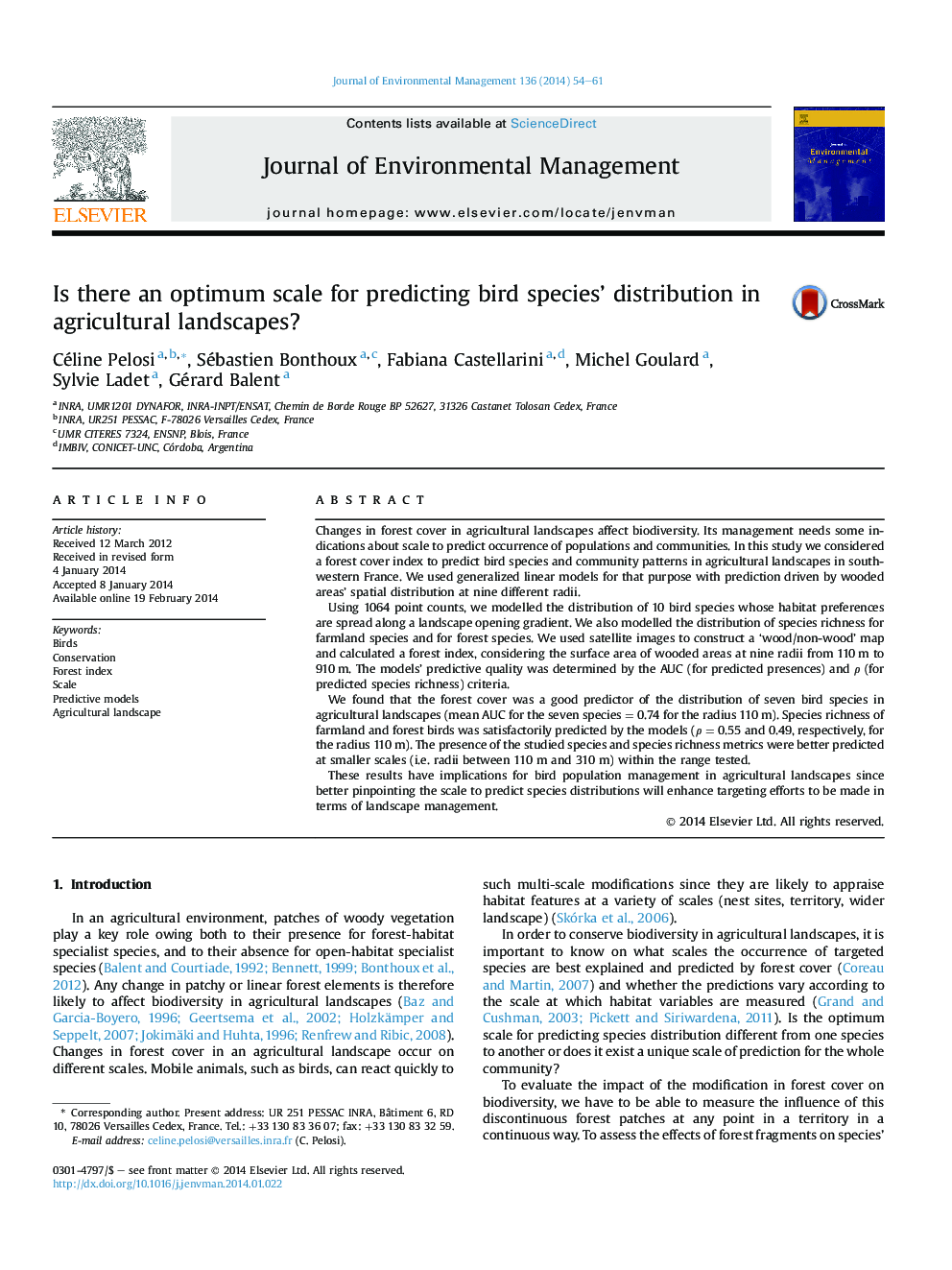| کد مقاله | کد نشریه | سال انتشار | مقاله انگلیسی | نسخه تمام متن |
|---|---|---|---|---|
| 1055707 | 1485276 | 2014 | 8 صفحه PDF | دانلود رایگان |
• Surface areas of woods are good predictors of bird distribution.
• Presence of bird species is influenced more by local than by broader context.
• Pinpointing the scale to predict species distributions may help landscape management.
Changes in forest cover in agricultural landscapes affect biodiversity. Its management needs some indications about scale to predict occurrence of populations and communities. In this study we considered a forest cover index to predict bird species and community patterns in agricultural landscapes in south-western France. We used generalized linear models for that purpose with prediction driven by wooded areas' spatial distribution at nine different radii.Using 1064 point counts, we modelled the distribution of 10 bird species whose habitat preferences are spread along a landscape opening gradient. We also modelled the distribution of species richness for farmland species and for forest species. We used satellite images to construct a ‘wood/non-wood’ map and calculated a forest index, considering the surface area of wooded areas at nine radii from 110 m to 910 m. The models' predictive quality was determined by the AUC (for predicted presences) and ρ (for predicted species richness) criteria.We found that the forest cover was a good predictor of the distribution of seven bird species in agricultural landscapes (mean AUC for the seven species = 0.74 for the radius 110 m). Species richness of farmland and forest birds was satisfactorily predicted by the models (ρ = 0.55 and 0.49, respectively, for the radius 110 m). The presence of the studied species and species richness metrics were better predicted at smaller scales (i.e. radii between 110 m and 310 m) within the range tested.These results have implications for bird population management in agricultural landscapes since better pinpointing the scale to predict species distributions will enhance targeting efforts to be made in terms of landscape management.
Journal: Journal of Environmental Management - Volume 136, 1 April 2014, Pages 54–61
